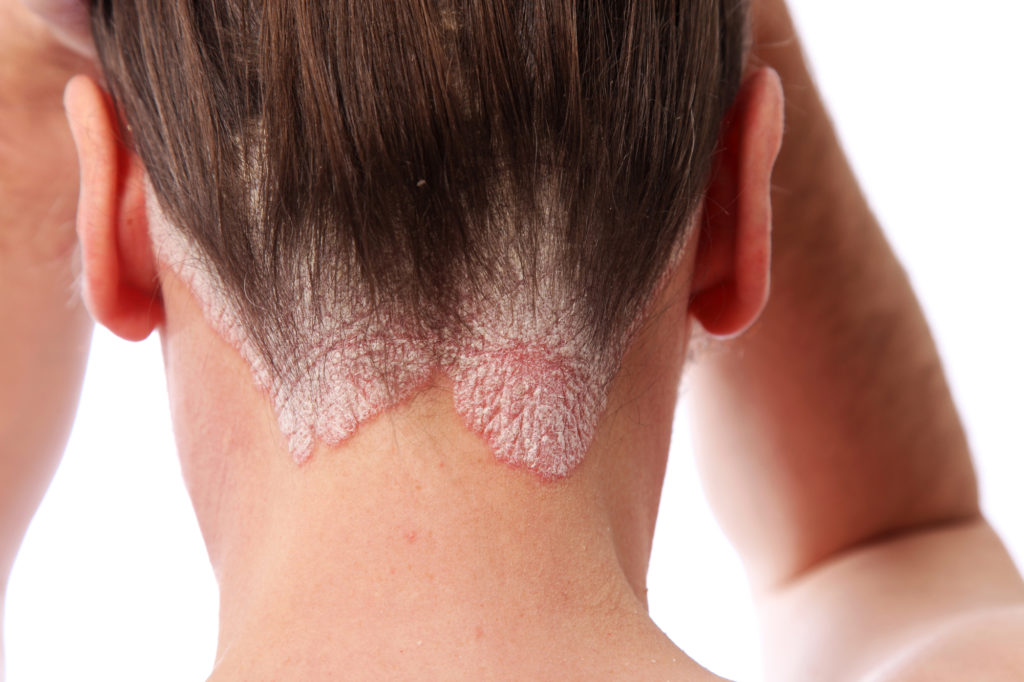Psoriasis is a common, immune-mediated, inflammatory skin disease with a strong polygenic component and multiple clinical subtypes. The most common of these subtypes is plaque psoriasis, which presents as sharply defined, erythematous (reddened), itchy plaques. The scalp, elbows, knees, and buttocks are most often affected. Additional subtypes less commonly seen are:
Guttate psoriasis: multiple smaller, erythematous plaques with a “rained-on” appearance along the torso and extremities
Pustular psoriasis: numerous tiny pustules develop superficially on the skin, often with accompanying erythema and/or fever. There are several pustular variants: von Zumbusch, annular pattern, exanthematic, localized patterns, and pustulosis of the hands and feet.
Erythrodermic psoriasis: extensive erythema, peeling, and scaling throughout the entire body. While uncommon, this condition makes patients more susceptible to complications due to their compromised skin barrier. They are often unable to properly regulate their body temperature or protect against infection or fluid loss.
WHAT CAUSES PSORIASIS?
Psoriasis has a strong polygenic component, meaning multiple genetic factors influence the development of the disease. These genetic predilections, when combined with environmental triggers, such as infections, medications, injury, and stress, result in the exacerbation of psoriatic lesions.
TREATING PSORIASIS
While there exists no cure for psoriasis, the goal of treatment is to maintain control of the disease and prevent widespread lesions. Limited disease can be treated with topical therapies, such as corticosteroids, vitamin D analogs, calcineurin inhibitors, and retinoids. More extensive disease may necessitate the use of phototherapy or systemic medications such as methotrexate, cyclosporine, oral retinoids, or biologic immune modifiers. These medications, while having the ability to clear lesions within several weeks, require informed consideration and prior lab work, due to their immunosuppressive effects.



